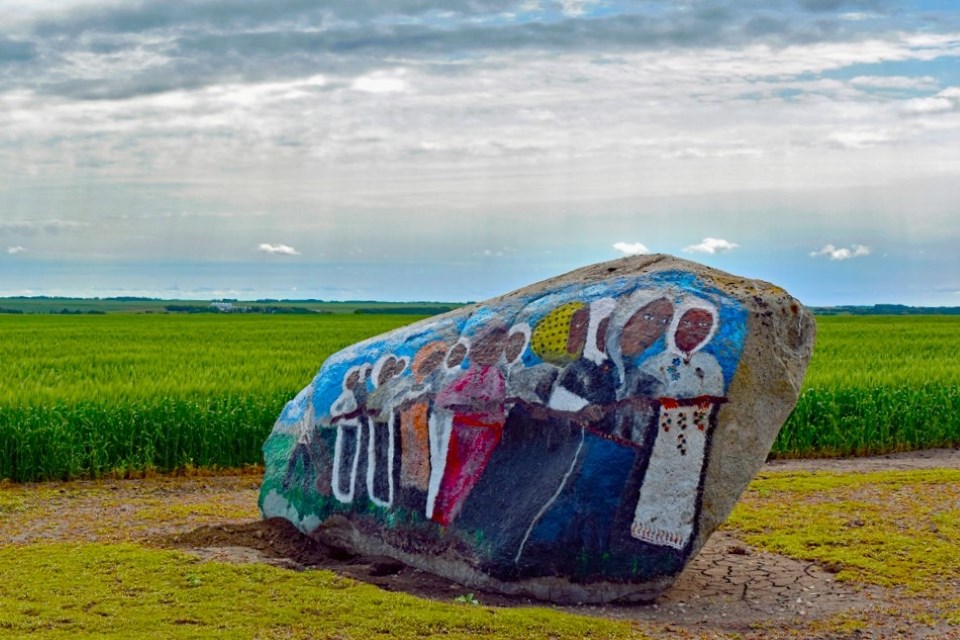SASKATOON — Saskatchewan was among the provinces that experienced a surge in tourists last year, as Canadians opted to stay in their backyard to explore and discover other places in the country.
This year, the trend may continue and even increase due to the U.S. imposition of tariffs on Canadian goods and President Donald Trump’s repeated threat of turning Canada the 51st state.
Data provided by the short-term and long-term homestay platform Airbnb Inc. showed Saskatchewan was one of Canada’s most exciting provinces for local tourism, with 14 of the 28 communities welcoming their first guests.
“Nationally, 2024 was a record-breaking year for domestic travel on Airbnb, with nearly nine million guest arrivals across Canada, a more than 40 per cent increase since 2019, with over 1,750 destinations welcoming guests last year,” Airbnb said.
“Saskatchewan’s role in this trend is noteworthy—not just in terms of visitor growth, but also in helping to bring new destinations into the spotlight. From local hosts to small businesses, more communities across the province benefit from a new wave of regional tourism.”
Airbnb noted that Canadians continue to opt for staycations and explore hidden gems closer to home, with the momentum expected to persist into 2025, as domestic searches and bookings show an upward increase.
Saskatchewan’s prairie towns and villages opened their doors to local travellers seeking to escape fast-paced city life, enjoy the quiet countryside, and experience the hospitality of the province’s rural living.
Out of the 14, the Village of Kennedy was the farthest located 431 kilometres southeast of from Saskatoon. The Moose Mountain Pro Rodeo, held every July, also attracts visitors.
Prud’Homme, another village, was the nearest popular destination, located just 59 kilometres northeast of Saskatoon and a 35-minute drive away. The Town of Duck Lake can also be reached in under an hour’s drive, located 86 kilometres north of Saskatoon.
Rama is well known in the province as a pilgrimage site at the Shrine of Our Lady of Lourdes. Catholic pilgrims flock to St. Anthony Parish every Aug. 14 and 15 to honour Mary on the Feast of her Assumption. The village is 264 kilometres east of Saskatoon.
Mistusinne is a resort village 135 kilometres south of Saskatoon, located on the eastern shore of the Gordon McKenzie Arm of Lake Diefenbaker. It is a summer retreat with many cabins, where visitors can enjoy playing golf.
Cut Knife is 196 kilometres northwest of Saskatoon, with North Battleford as the nearest city. Popular attractions are the world’s largest tomahawk at the Poundmaker Historical Centre and Big Bear’s monument, paying tribute to a Cree chief, who played many pivotal roles in Canadian history including the 1885 Northwest Rebellion.
The towns of Stoughton (397 km south) and Lanigan (123 km east) are other notable locations. Montmartre (344 km southeast), Lipton (298 km southeast), Coleville (222 km west), Pleasantdale (203 km northeast), Holdfast (175 km) and Spalding (166 km east) are villages.
Tourism Saskatchewan communications and visitor services director Elizabeth Braitenbach said offering unique accommodations is one way to attract visitors to the province, as listed on TourismSaskatchewan.com.
“For example, Flora Bora Forest Lodging, located near Emma and Christopher Lakes, offers beautifully crafted and thoughtfully designed yurts (a traditional, portable and circular dwelling used by nomadic groups in Central Asia),” Braitenbach told SaskToday.
“At Pêmiska Tourism, visitors can stay in four-season tipi-inspired lodges nestled in the tranquil setting of Fort Carlton Provincial Historic Park. Glamping opportunities are available at Blackstrap Provincial Park, Buffalo Pound Lake and Saskatchewan Landing Provincial Park.”
Braitenbach added that although Tourism Saskatchewan does not have travel data specific to the communities of Coleville, Cut Knife or Holdfast, the province’s tourism industry generated $2.87 billion in travel spending in 2023, compared to $2.4 billion in 2022.
“Saskatchewan’s Growth Plan’s goal is to generate $3.6 billion in tourist expenditures by 2030. It is well positioned to meet this target by continuing to grow our economy, creating new jobs, and providing one-of-a-kind experiences for visitors coming to our province,” she added.




